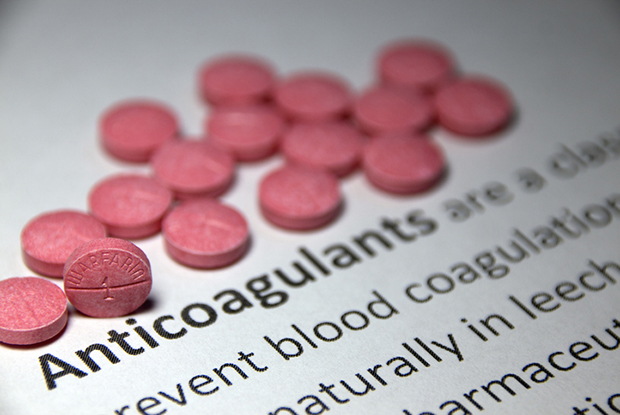Direct oral anticoagulants, DOAC or NOAC, are the latest therapeutic drug class in the prevention of stroke as the result of atrial fibrillation (AF). Their uptake in general population has been increasing worldwide, but also brings new challenges including appropriate dosing, drug-drug interactions and adherence given the short half-life.
Approximately 1/3 of DOAC-patients receive an inappropriate dose, although it’s well described in guidelines and SmPC. The inappropriate prescribing has different reasons (eg lack of knowledge, fear of bleedings or simply forgot to check) and can lead to an increased risk of bleeding (dose to high) or insufficient protection against trombotic events (dose to low).
DOAC should be taken every day due to the short half-life and, in the case of AF, often chronically. Being non-adherent (~not take the drug as prescribed) can lead to increased risks of trombotic events. Therefore, adherence is important but we see that a large group of people (15-40%) is quiting their medication early (~non persistent) or doesn’t take them regularly (poor implementation). The holy grail doesn’t exist in adherence, but there are some evidence-based recommendations to improve adherence in DOAC.
Pharmacists should…
… have access to the creatinine clearing (CrCl)
… check comedication that can influence blood concentration of DOAC
… control dosing every time a patient picks up his medication
… counsel their patients on the use of DOAC
… assess adherence with electronic monitoring
… intervene if patients are non-adherent
Practical tools & websites
- Practical pocket guide (ESC)
- Praktische gids: veilig afleveren van DOAC (KAVA)
- iPACT website
- Thrombosis Advisor website (Bayer)
- Kwaliteit bevorderend programma (MFO-CMP)
References
- Ruiz Ortiz M,Muñiz J, Raña Míguez P, et al. Inappropriate doses of direct oral anticoagulants in real-world clinical practice: prevalence and associated factors. A subanalysis of the FANTASIIA Registry. EP Europace, eux316. doi: 10.1093/europace/eux316
- Yao X, Shah ND, Sangaralingham LR, Gersh BJ, Noseworthy PA. Non-vitamin K antagonist oral anticoagulant dosing in patients with atrial fibrillation and renal dysfunction. J Am Coll Cardiol 2017;69:2779-90.
- Van Brabandt H, San Miguel L, Fairon N, et al. Antistolling en voorkamerfibrillatie – Synthese. Health Technology Assessment (HTA). Brussel: Federaal Kenniscentrum voor de Gezondheidszorg (KCE). 2016. KCE Reports 279As. D/2016/10.273/97.
- Desmaele S, De Wulf I, Dupont AG, Steurbaut S. Pharmacists’ role in handling problems with prescriptions for antithrombotic medication in Belgian community pharmacies. Int J Clin Pharm 2015;37:656-68.
- Rydant S. Adherence in the treatment with oral anticoagulation therapy (OAT). Riziv/Inami consensusmeeting ‘Rational use of OAT in the treatment of AF and VTE’. Auditorium Lippens Brussel, 30 november 2017.
- The 2018 European Heart Rhythm Association Practical Guide on the use of non-vitamin K antagonist oral anticoagulants in patients with atrial fibrillation. European Heart Journal 2018. doi:10.1093/eurheartj/ehy136.
Disclosures
In the last 12 months, our company received consultancy fees and travel grants from Bayer AG and the Davie-Ratnoff McFarlane Foundation.

